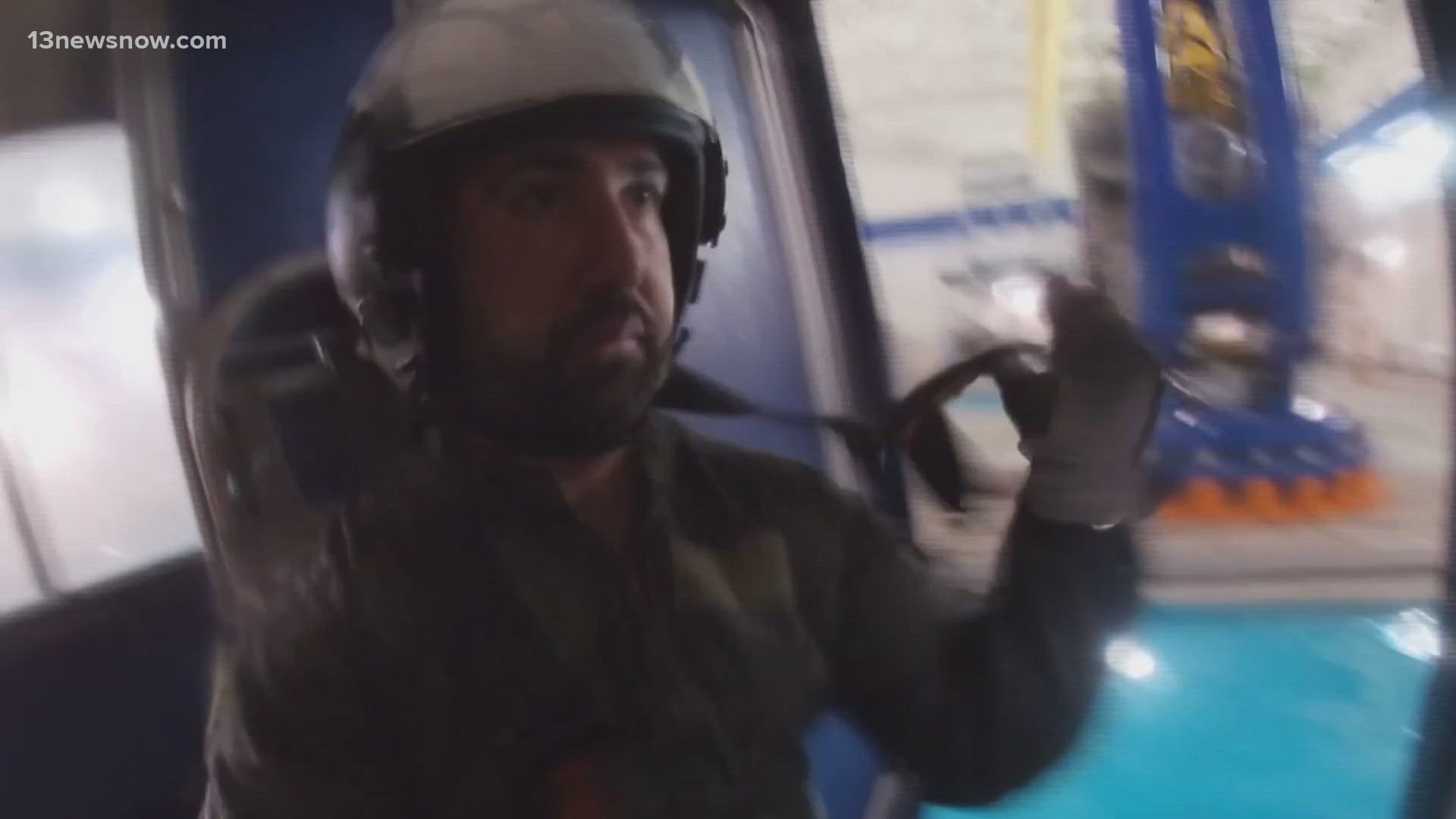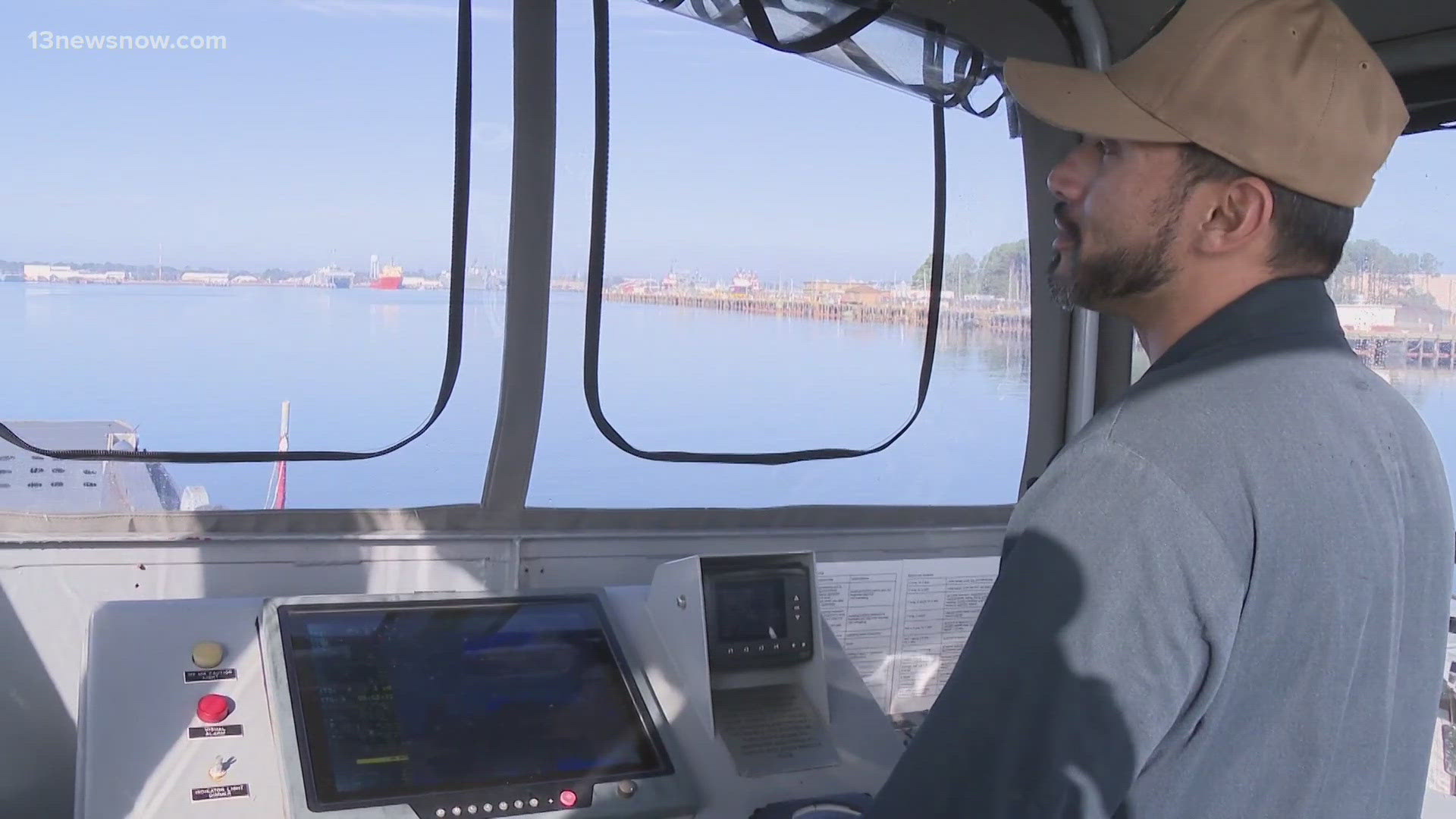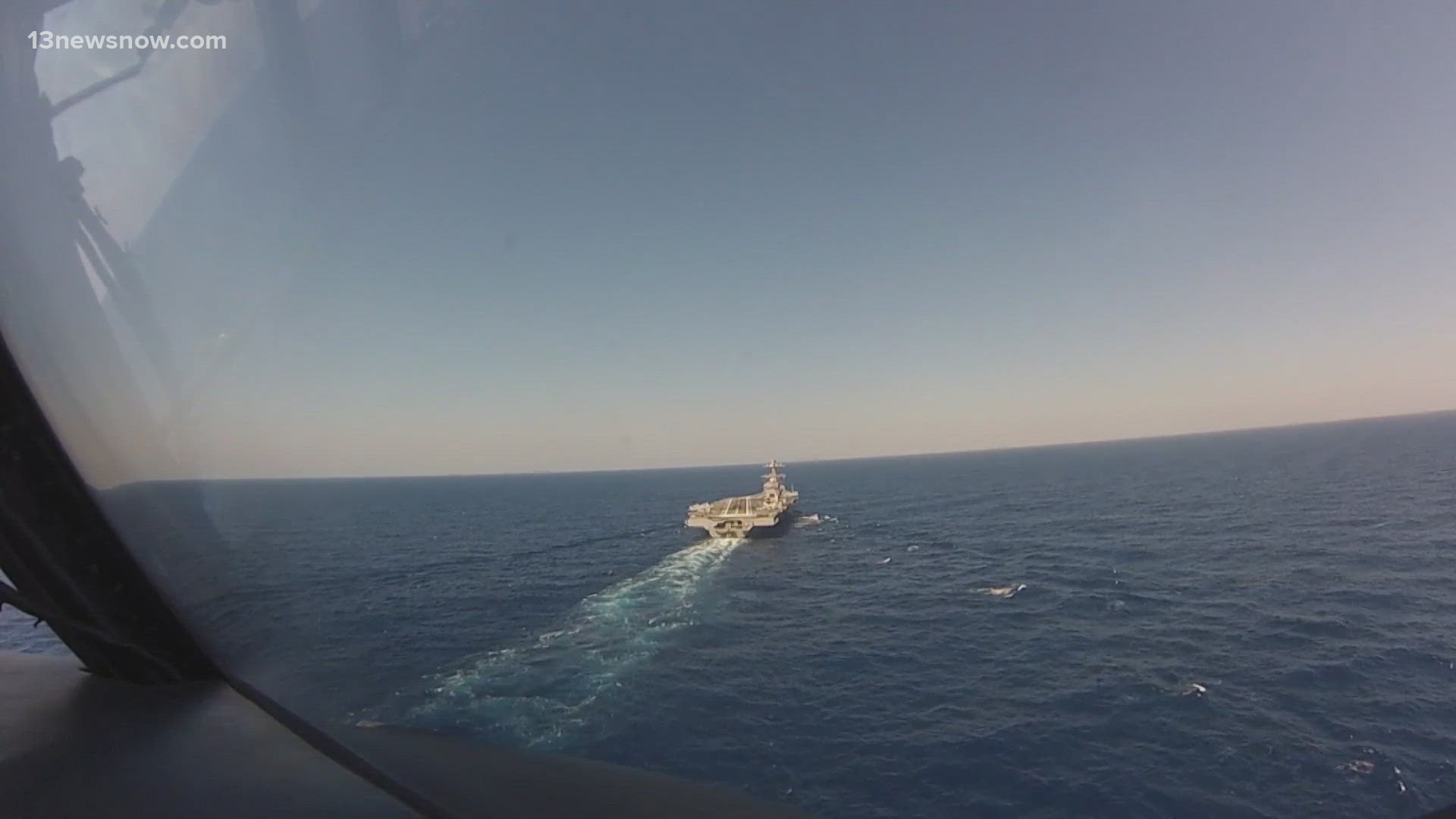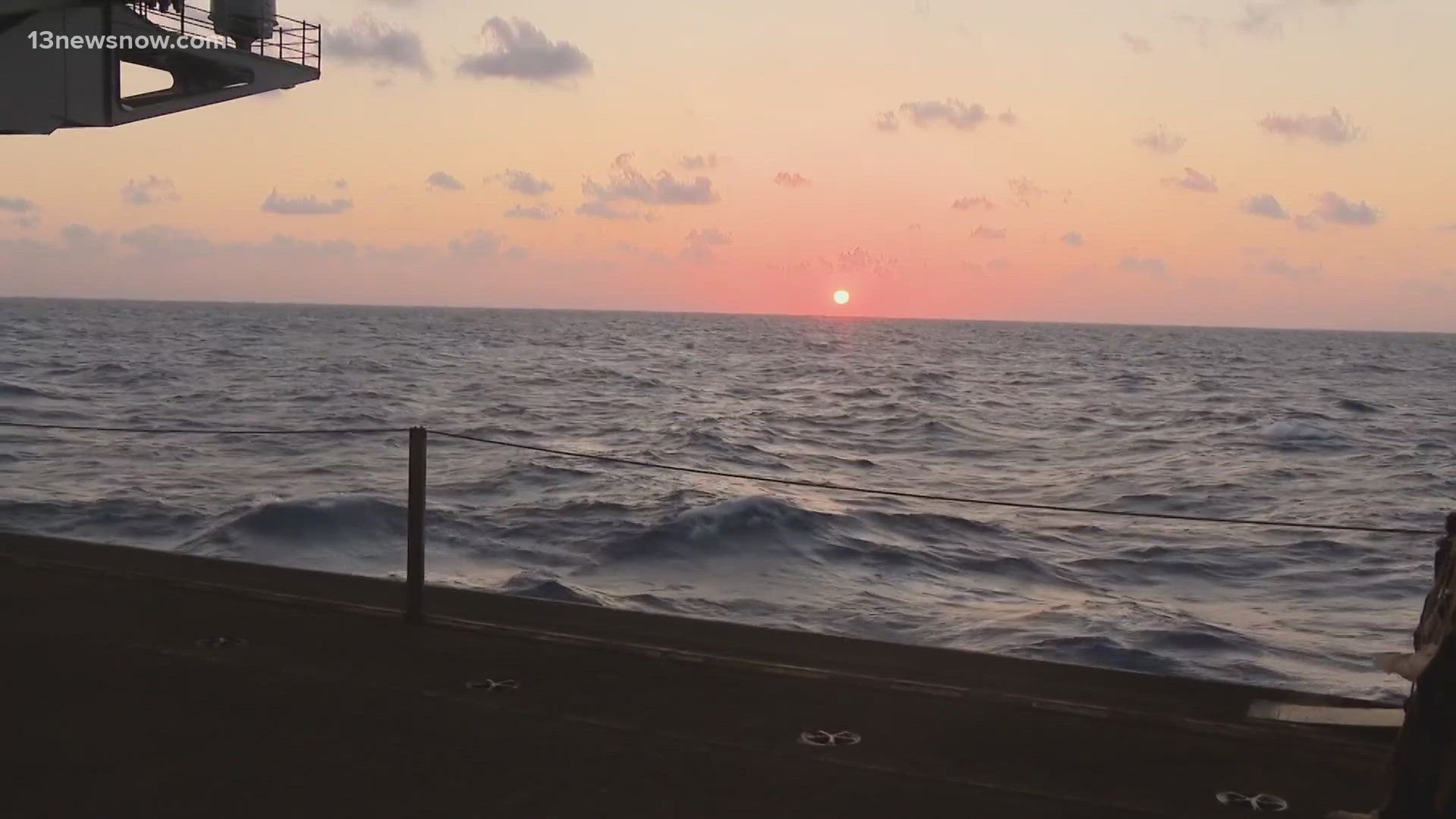NORFOLK, Va. — The Sailor for a Day program from the US Navy Fleet Forces gives journalists across the country an opportunity to experience what life is like as a sailor.
Three groups made up of three to four media outlets experience two days of training commands in Naval Station Norfolk and Little Creek, as well as two days aboard the USS Gerald R. Ford aircraft carrier at sea during flight quarters operations, which is launching and landing aircraft from the carrier.
Commands for reporters include Aviation Survival Training, Helicopter Sea Combat Squadron Two, Assault Craft Unit Two, and Maritime Expeditionary Security Force Two.
Day 1
On Day 1, members of the media and those who work within a media capacity participated in training that allowed them to experience what it would be like to have to escape their aircraft should it go down over water.
"The reason why it's so important is because, you know, you're not always going to be flying over solid ground, right?" said Helicopter Sea Combat Squadron (HSC) 2 Commander Andy Conner. "You need to know how to get out of your aircraft safely and how to extend your survivability in water until that rescue comes."
The training provided by the Aviation Survival Training Command in Norfolk, VA had journalists swimming in flight gear, dealing with all the restrictions of the clothing of the gear, practicing how to tread water, and how to drown-proof things in order to extend their survivability in cold water.
Journalists also got the opportunity to ride in a helicopter with members of the Helicopter Sea Combat Squadron (HSC) 2 – also in Norfolk – who deal with a whole lot of mission sets including search and rescue, logistics, carrying people and cargo in assistance to the fleet.
Day 2
For Day 2 of the program, of Sailor for a Day with US Navy Fleet Forces focused on two commands out of Joint Expeditionary Base Little Creek-Fort Story: Assault Craft Unit (ACU) 2 and the Maritime Expeditionary Security Force 2.
Journalists spent the day out on the water in Landing Craft Utility boats, and on patrol boats.
"When people think of the United States Navy, I think that they think of destroyers or cruisers. There's so many neat little stories of other things that we do that most people don't think about it."
Sailors also had media personnel go through what is known as a Laser Shot Simulator. The simulator is on hydraulics to simulate what it is like to shoot a moving target from a moving vessel on the water as part of the fleet's force protection.
Day 3
On the third day of the program, media crews followed U.S. Navy Fleet Forces out to sea on board the USS Gerald R. Ford (CVN-78), the newest carrier in the fleet.
"We can talk to you about flying out to an aircraft carrier... but there's nothing like being in that C-2 aircraft and then all of a sudden going from 125 knots to zero in two seconds. You have to experience that."
While aboard the Ford, journalists had the chance to learn about flight quarters operations, gained insight about the various types of aircraft aboard the ship, and the mission of this newest carrier.
"The advancements on our ship compared to a Nimitz-class aircraft carrier are pretty dramatic. It's all about technological advancements, making the ship more ready for the future fight into the next 30 to 40 years of naval aviation."
Day 4
On the fourth and final day of the Sailor for a Day program, news crews were back on board USS Gerald R. Ford, this time getting a tour of the attached Carrier Air Wing 8.
The US Fleet Forces Command started the Sailor for a Day program in 2017 for members of the media across the country to see what life in the Navy is like. To date, they say they've had over 100 TV stations, including 13News Now, join.
Navy MR3 Tonee Hill, from Franklin, told 13News Now he's loved serving on USS Gerald R. Ford.
"Being on this ship is a great experience, and I love it," he said. "I love these guys on the ship. It's the best experience I've had so far being in the Navy."




